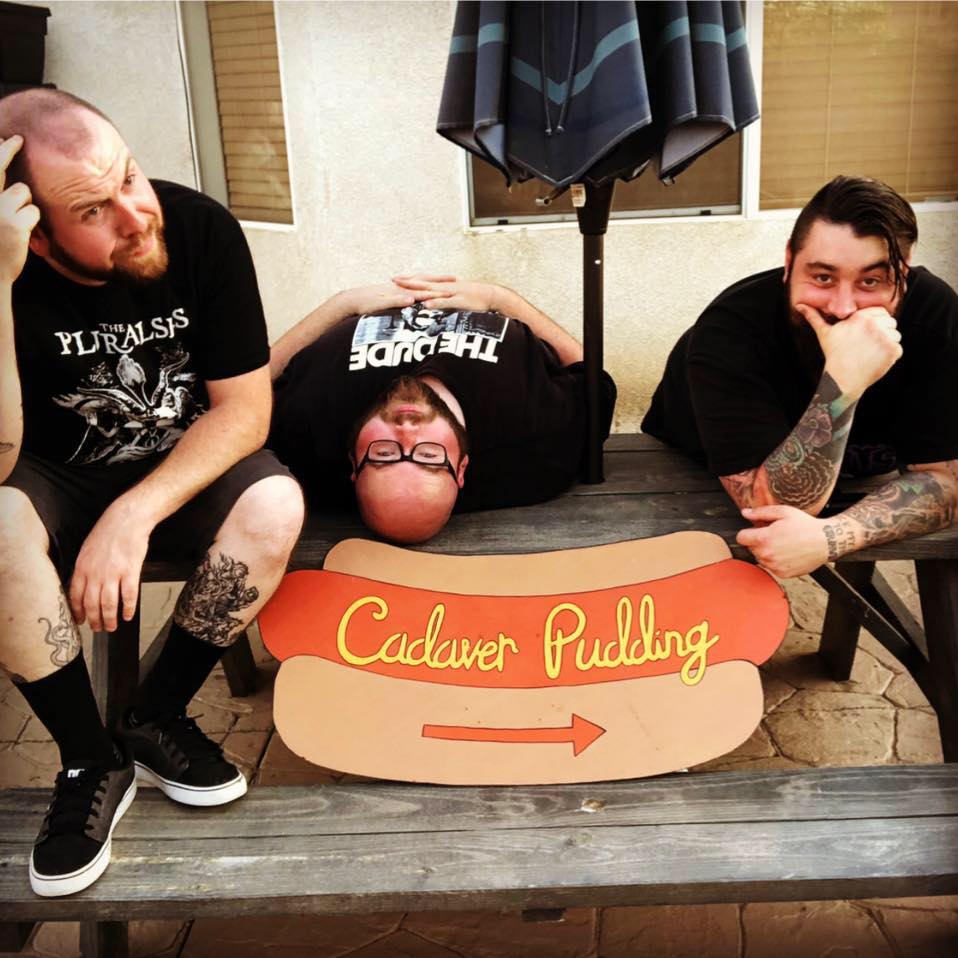
Horror, Punk, and Cadaver Pudding
More Videos
Published
5 years agoon
Are you in the mood for music that evokes all the great sort of horror that we cover here at Haunted MTL? Well, you’re not alone. We decided to contact some experts about just this sort of thing and they’ve shared with us a number of great tracks to add to your playlist. We’re talking horror punk!
For this purpose, our expert opinion this time around comes from the band Cadaver Pudding. Hailing from the Inland Empire of Southern California, the current Cadaver Pudding lineup is comprised of guitarist Tom Kleve, bassist Zack Smith, and drummer Jon Bohn. We’ve asked each of them to share three favorite songs that evoke that horror feel, and boy did they deliver. Their picks are presented with with their commentary and reasoning.
As a bonus, we’re going to share their track “Dottie” from their album Greetings From… as well.

Tom’s Picks
The Dickies – “Killer Klowns From Outer Space”
The Dickies have a sound that you can never forget. Leonard’s voice is in a league of its own. Their song “Killer Klowns From Outer Space,” for the movie of the same name, is perfect. From the guitar riff that brings us all back to the circus, to a simple chorus that stays in your head for hours. The movie itself is in my top 3 movies of all time and this song sets it up perfectly.
Schoolyard Heroes – “Curse of the Werewolf”
Off their debut release, “Curse of the Werewolf” is the first track, and it sets the pace for the whole record. Starting with clean guitars, and going into a drumbeat that makes you want to dance. Midway through, you get some heavy screams with almost operatic vocals from Ryann Donnelly. It definitely shows Ryann’s vocal range. They were such a great band that didn’t last long enough. They put out three great records, evolving their sound throughout. Sadly, I only found the band right before they broke up. They played just a few towns from me and I decided to skip that one and catch the next. There wasn’t a next.
45 Grave – “Party Time“
45 Grave was the first band I was introduced to in the “horror” genre. Their song Party Time was the anthem to my favorite zombie film Return of the Living Dead. Party time was recorded and released a few different times. For the film, the lyrics were changed to relate more to the subject matter. The lyrics for the original release were very dark. The song was inspired by a true story of child abuse. The lyrics weren’t about zombies or demons, 45 Grave reminded us that monsters truly exist, all around us. With strong lyrics, very reverb driven guitars and vocals, and a chorus any can yell along to, Party Time is unforgettable.
Zack’s Picks
The Cramps – “I Was A Teenage Werewolf”
I remember the first time I heard the Cramps, more so I remember the first time I heard this song. “I Was A Teenage Werewolf” was on their Songs the Lord Taught Us album. It was around Halloween I was 13 years old and it stood out with how eerie and haunting the guitar sounded and with Lux Interior’s manic voice singing over it, his deranged yells, moans and screams in between sounding like the inside of a mental asylum. It’s still one of my favorite Cramps songs.
The Damned – “Video Nasty”
The Damned is one of, if not my favorite bands. Musically, they have explored a lot of different styles and have always been consistently good. “Video Nasty” was on their Thanks for the Night single. This song is kind of self explanatory, it’s about horror movies!! In the UK at the time they had banned a lot of horror movies, Evil Dead, Driller Killer and so on, calling them video nasties. It lead to a surge of bootleg horror movies coming into the UK. Needless to say I’m a horror fiend, haha.
This song is amazing and catchy with a great riff, a driving rhythm section and Dave Vanian’s howling booming voice that makes this song get embedded in my head for days.
Rudimentary Peni – “The Evil Clergyman”
This is such a good and weird band. Nick Blinko, their singer/guitar player, was schizophrenic and an obsessive person. They made some weird albums, Cacophony being one of them. This entire album is about the works of H. P. Lovecraft, of which I’m a big fan. The entire album is amazing but this song in particular is just a very creepy instrumental track and it is so good.
Jon’s Picks
Balzac – “Sorrow 9”
Balzac’s “Sorrow 9”, from their album Into the Light of the 13 Dark Night, was probably my first introduction to the horror punk scene. I couldn’t understand a word Hirosuke was saying I can tell you that this song and band were the start of me becoming a drummer. It wasn’t the typical punk sound; it had a nice clean guitar open with a interesting drum sound which was closed hi-hats and rim clicks on the snare. And it was such a different sound for me that I fell in love with it and at the same time became obsessed with this drummer because he had a different feel for punk music.
This song was probably one of the first covers I learned with my high school band Skarecrow. To this day this song will always pop in my rotation every now and again and it brings me back to my teens and helping me realize my passion in music is in drums and nothing else
Order of the Fly – “Down”
Order of the Fly’s “Down”, from their album An Exquisite State of Decay, is my favorite song from Order. My first listen to this song gave me goosebumps because it was the most interesting song on the album and seemed very difficult to play. I remember struggling to get the song down, especially because my high school band Skarecrow was going to cover it.
Luckily, I happened to be friends with the guys in the band and was able to talk to the drummer to get some tips on getting the song down. I still use a lot of those techniques today with Cadaver Pudding.
AFI – “Total Immortal”
For most people the Misfits are an introduction to horror punk, but I hadn’t heard them prior to hearing AFI’s “Total Immortal” from their All Hallow’s E.P. album. I wasn’t even really into punk in high school, which was ironic because I was in a punk band. That was mostly because we were all not great musicians. We were like 4 chords, simple drums, that sort of thing.
This album, along with the Order of the Fly’s An Exquisite State of Decay, shaped my like for the genre. Although to this day I’m not a big punk listener. There are few bands I enjoy, but AFI is one that I always come back to. AFI was another band that was really influential on my drumming as well.
Greetings From…
Cadaver Pudding’s first album, Greetings From… is available on Bandcamp. Additionally, you can also find them at their official Facebook page.
Listen to “Dottie” right here, and check out the rest of Greetings From… for more great tracks. [bandcamp width=350 height=470 album=2966782974 size=large bgcol=ffffff linkcol=0687f5 tracklist=false track=141197521]
Did you enjoy this selection of songs? Do you have a favorite of the bunch? Please let us know in the comments. After that, please poke around to see what else we have for you here at Haunted MTL.
David Davis is a writer, cartoonist, and educator in Southern California with an M.A. in literature and writing studies.

You may like
1 Comment
Leave a Reply
Cancel reply
Leave a Reply
This site uses Akismet to reduce spam. Learn how your comment data is processed.
Gaming
Interview with Creative Director Michael Highland: Let’s! Revolution! @ PAX
Published
36 mins agoon
April 19, 2024
Another game I had the chance to play at PAX East was, Let’s! Revolution!, a Minesweeper-inspired roguelite puzzle game by animation (and now game) studio, BUCK. I talk more about the game itself in another post. Here, I wanted to highlight the conversation I had with Michael Highland, the Creative Director for Let’s! Revolution! and his journey through video game development.
How did you become involved in video game development?
I studied digital media design in college; this was before there were many programs dedicated to game development. After graduating, I self-published a mobile game called Hipster City Cycle with friends. Over the next few years, I slowly got more freelance work as a game designer, and eventually landed a full-time role at thatgamecompany working on the follow-up to their 2012 GOTY Journey. I worked my way up there and was eventually the Lead Designer on Sky: Children of the Light. Working at thatgamecompany opened a lot of doors professionally. I eventually wound up at BUCK, where I saw the opportunity to help establish a new game studio within a very vibrant existing creative culture.
What has been the most challenging aspect of the development process?
Each studio has its own unique issues based on the people involved. There are commonalities like the need to fight feature creep and building consensus around ideas early in the process when all you have is an abstract grey box prototype to react to. At BUCK the biggest challenge has been channeling the abundance of creative energy and talent into a shippable product. There’s a ton of enthusiasm for games within the company, and without clear product-centric goals (who is the target audience, what platform are we releasing on, what’s the marketing strategy), projects have the tendency to spiral out of scope. Another challenge has been building credibility with publishers. BUCK has an amazing pedigree for animation and design, maybe the best in the world, but when we initially pitched ideas to publishers, they all said the same thing: looks great, but until you’ve shipped a game, you’re too high-risk. That’s what led to us self-publishing Let’s! Revolution! Now that we have a well-reviewed game out in the wild, I feel confident we’ll have more luck with publishers.
BUCK primarily has its roots in animation, what led the decision to start branching into video game development?
It started with a general excitement about the medium and a desire among the staff to work on a game. Leadership at BUCK is all about providing the staff with exciting creative opportunities, and getting to work on a game, is, for some, a creative dream come true. And putting BUCK content out in the world is a point of pride and a boost to morale. From a business perspective, the fact we can staff out game projects with the top animation and design talent in the world is a huge advantage. We’re already starting to see new opportunities for the service side of the business based on the success of Let’s! Revolution!
The art, unsurprisingly, is delightful. What were some of the priorities during the character design process and how did those influence the final hero designs?
Our Art Director Emily Suvanvej really led the charge on the look of the game. There are obvious influences like Studio Ghibli, Moebius, and Steven Universe. My shared goal with Emily was to make something together that reflected the diversity of the team’s artistic and lived experiences. The artists put so much love into the character designs and animation, it really shows.
Some of the primary game mechanics take inspiration from Minesweeper, what was the process like to create your own interpretation of those classic mechanics?
This article goes into depth on this topic. The TLDR is that we took a very iterative approach, at each stage trying to identify what was working about the prototype and lean into that. The initial game concept came together relatively quickly in part because our goal for this project was just to finish a game. We just focused on what was good and kept building on it. I wouldn’t say the final game is “perfect” – but we wound up with a much bigger and higher quality experience than I expected by not letting perfectionism get in the way of making good better.
Is there anything else you would like to plug or that you think is important for people to know about Let’s! Revolution! or other upcoming projects?
The music and sound design for the game is stellar. We worked with a creative audio company called Antfood and they knocked it out of the park. The audio got an honorable mention from IGF, which I think is extra impressive because most of the other games were audio-centric titles with some unusual hook to the sound design. For the OST, Antfood reworked all of the music from the game into a continuous flow, like a concept album. It’s so good. I love working with them.
Gaming
Interview with Game Dev Julian Creutz: Quest Master @ PAX
Published
2 weeks agoon
April 4, 2024
As mentioned in previous posts, I had the opportunity to demo a pre-early access version of the game Quest Master alongside the Lead Developer, Julian Creutz. Quest Master is a Legend of Zelda and Super Mario Maker inspired dungeon crawling and building video game. While the other post covers the game itself, this one covers the inspiration and vision for the game as told by Julian.
How did you become involved in video game development?
I’ve been a huge gamer, and especially a Zelda fan, ever since I was a little child when my dad put a GameBoy Advance with “The Legend of Zelda: A Link to the Past” into my hands. Sometime during elementary school I started dabbling with game development using visual tools like Scratch and GameMaker. I quickly got into making Zelda fan games and had dreamt of the day when I would make my own Zelda game one day. Over the years I’ve honed my game development and programming skills, resulting in where I am today.
What has been the most challenging aspect of the development process?
Developing Quest Master is essentially like making two games at once – the making and the playing part. Both of these game elements have to be equally as polished to form a cohesive one.
The most difficult thing by far about the game’s development has been to make the maker mode experience intuitive for first-time users and people who know nothing about Zelda-like games, but at the same time powerful and complex enough to allow creating anything you could dream of.
One good example is the gameplay feature to link certain parts to others, like linking a pressure plate to opening a door. We’ve been through countless iterations affecting both the visual, gameplay and user experience aspects of it – I hope that the one we are using right now is the final one!
Quest Master takes a lot of inspiration from classic dungeon-crawlers like the Legend of Zelda franchise. What about these games was so enchanting to you and how does Quest Master try to capture that enchantment?
As described earlier, I’m like the biggest Zelda fan, which I’m sure shows. My gripe with many Zelda-likes on the market is that none perfectly capture the feel of the classic entries… there’s always something missing.
I confidently believe that Quest Master differs from that greatly. We are trying to make Quest Master feel like an in-house 2D Zelda like Nintendo used to make, just from an indie team like ours. Many people crave the classic 2D entries, just like I do.
What emotions do you hope the player will experience while playing Quest Master? What design choices were made to assist in that desired atmosphere?
A big aspect of Quest Master is its local multiplayer. The game is deliberately designed to work flawlessly with that, and makers can create specialized puzzles in the game that require all players to work together for example. The result is both rewarding, funny, and sometimes infuriating altogether, for example when one of your buddies throws you into a hole.
As a community dungeon maker, what features are you most excited to see implemented in player-made dungeon crawls?
I’ve already been hugely amazed by the creations of the existing Quest Master demo. With all the new features the game will launch into Early Access with, I bet this will be tenfold. I myself always enjoy the brain busting puzzles people come up with. Other things I also like a lot are the unintended mechanics the players find, which dynamically emerge from the many, many gameplay systems working together.
What’s it been like working with Apogee, an indie publisher who goes back to the early 1990’s and has a long legacy of terrific game releases?
I’ve only had very few interactions with game publishers in the past, and Quest Master is my first large scale commercial game project. There’s preconceived notions floating around everywhere on the internet about how evil game publishers are and how much better you would be off self-publishing your game. Contrary to that, working with Apogee has been nothing short of supportive and family-like. They are very invested in the project, and they have many Zelda fans on the team also helps a lot. They are supercharging the potential of Quest Master and without them the game would not be where it is today.
Is there anything else you would like to plug or that you think is important for people to know about Quest Master or other upcoming projects?
Early Access is just the beginning! Quest Master will be hugely expanded upon during its Early Access phase, with many more themes, dungeon parts and entire new gameplay features coming in short intervals and a rapid update schedule. There are always new things around the corner. For example, things like the singleplayer story campaign and the overworld maker will be most likely not be part of the initial Early Access release, but we will make sure to build anticipation by introducing bits and pieces into the world of Quest Master to build up to that.
I hope you are looking forward to it as much as I am!
Interviews
An interview with creator of Kaidankai, Linda Gould
Published
2 years agoon
September 4, 2022
I was fortunate enough to interview Linda Gould about her beautifully eerie podcast, Kaidankai. I hope that you all enjoy getting to know her and her creepy work as much as I did.
Your recent collection is called Unpleasantville, a collection of stories from a singularly creepy town. What inspired this project?
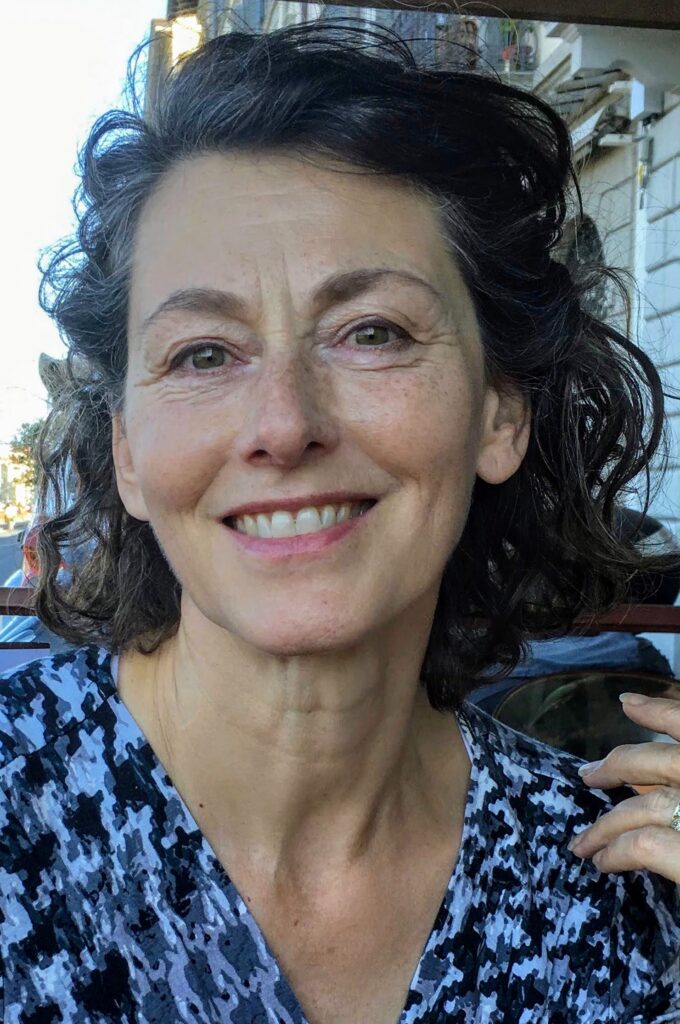
One of the only poems I related to when in high school was Spoon River Anthology (SPA). For those who don’t know it, SPA, it is a collection of poems about life in a small town as told by the ghosts of the residents in that town. The poems were based on real people, and the anthology burst the bubble on the idea that country life was idyllic. I loved its irreverence and was captivated by the idea that ghost stories, which I always loved, could be literary, taught in high school AP English classes! For the Kaidankai, I asked listeners and contributors to pick their favorite poem and read it for me. Then, I did a special presentation of their readings for the podcast. Many people had never heard of SPA and were so happy to find it. So many people, way more than I expected, sent in their readings, and they were just awesome.
That made me wonder what a modern version would look like. Since the Kaidankai audience and contributors are all around the world, I couldn’t pick one place without excluding someone, so I made up a name and a few landmarks that anyone, anywhere could relate to and sent it out to see what would happen.
Unpleasantville is a shared world, with many writers telling their own stories. What was it like, working with so many writers in this shared space?
Well, that describes the Kaidankai podcast in general. People from Asian countries, Australia, North America and throughout Europe contribute. Sometimes, before I reject a story, I have to read it a couple of times to make sure that it isn’t just a different storytelling technique that I don’t understand or relate to. I force myself to explain to myself why a story isn’t a good fit. I’m not sure that I would take that approach if all the stories came from Western writers.
Of course, Unpleasantville is only part of your overall show, Kaidankai. What can you tell us about the show? Where did the name, Kaidankai, come from?
First, I have to tell you how much I love this podcast. The podcast started August 1st 2021 and was initially going to last only for 100 days in order to tell 100 stories. I live in Japan and in the last several centuries, people would go on pilgrimages to famous shrines during the month of August. Pilgrims from all over Japan would meet, and to pass the time, they would tell ghost stories, just like we do in the west around campfires. In Japan, they lit candles, 100, and as each ghost story was told, a candle was blown out. So, as the night progressed, as the candles were blown out one-by-one, it got darker and the stories became scarier. Imagine being in a deep forest or at a pilgrims inn inside a deep, dark forest. Imagine all the creaks, howls, screeches and mysterious sounds that surround you as the candles become fewer and fewer and how those sounds get closer and closer. It raises the hair on the back of your neck and gives you chills. And THAT was the purpose of kaidankai–to cool people off during Japan’s crazy hot and humid summers while entertaining people at the same time.
That is the basic outline of the Japanese storytelling tradition called kaidankai. Some might have heard of it as hyakumonogatarikaidankai because I think there was an anime made around it. A lot of the Japanese scary woodblock prints come from the stories told at that time, and the tradition of telling ghost stories in August holds true to this day, although in a different iteration. And the podcast was meant to be just another iteration of that. I was going to upload one podcast a day for 100 days, then start deleting them one-by-one after about a month. BUT, when it was supposed to end, people wrote me and said how much they would miss it, that they didn’t want it to end. So, I changed it to a weekly podcast. A few people asked to have their stories removed as originally planned, but most are still in the archives.
Most of your episodes are quite short, averaging from eight to twenty episodes. Was it an intentional choice to focus on such short form horror, or just a coincidence?
A little of both. Some people have sent in longer stories and, if I like them, I’ll read them on the podcast. But, I really wanted to stick with the short story format because I wanted to keep the feeling of people just sitting around a campfire or in a candlelit room telling their ghost stories. If anyone talks too long at a campfire, people get restless and tune out. And, I think if people are listening in the car or while cooking dinner, they want something that they can complete.
Your podcast has over 150 episodes. This is an impressive amount of spooky work. What can you tell us about creating that many episodes?
Well, like anything, the more you do it, the better it gets, lol. If you listen to the early episodes, they are definitely not as good as the later ones, mainly because the mic got a lot better. My readings have also improved, because a few of the earlier episodes had a professional reader, Michael Rhys, so I could learn from listening to him. Other people have read some of the stories, too (not just the Spoon River Anthology project) and it is really nice to have a diversity of voices, I think, but others have told me not to have different readers because the sound quality varies and it dilutes the branding of the show. I’m not really sure what to think of that. I mean, definitely, the sound quality varies, but unless the sound is just awful, in which case I wouldn’t upload it, I like the authenticity of it.
It’s a surprising amount of work, especially at first. You need to research the best way to do an intro and outdo (I didn’t), the best equipment to make quality sound (I didn’t) and how to promote it (I didn’t). I’m amazed when I look at how I just barreled into this with very little planning that people kept listening. But that attests to the need to have good stories, which is the most important thing.
Many horror podcasts drop off soon after creation. What’s helped you keep at this so long? I’ve been so lucky that writers from around the world have trusted me with their work. I can’t accept all the submissions, but I do read them all (like I said, sometimes more than once). At several times during the podcast, I’ve mentioned how much I love the diversity found in the stories featured on the Kaidankai, and that is 100% true. I love that there are ghost and vampire and monster stories, that some are cute and some or gruesome, that they include folktales and horror from around the world, and that they are presented as poems and prose. You never know what you will get when you tune into the Kaidankai, just like you don’t know what you will get when you sit around a campfire telling stories. For some people, maybe they don’t like that one day will be horror and the next day an atmospheric poem about a haunted forest. But I do, and the Kaidankai seems to be filling a niche for others, too. So, as long as people want to share their stories and listeners for those stories, I plan to keep it going.
After your Unpleasantville collection, what’s next for Kaidankai?
My dream is to have artists listen to a story and feel inspired to create something based on that story. I’m working on a YouTube channel right now that would feature a few of my favorite stories from the archive. I hope to have it up in time for October and Halloween. It might have to have the logo run through the whole reading like most YouTube videos have, but my dream would be to have an artwork of some sort as the visual element that relates to a particular story instead of the general logo. There are so many amazing artists in the horror/ghost/supernatural genre, just like there are so many writers. It would be great to be able to showcase a visual element to the stories, too.
Aside from your podcast, are there any other projects you’re working on?
There is White Enso, which is an online journal that features artwork of any kind that is inspired by Japan. WE’ve had quilts, poetry, photography, short stories, etc. And I’m always trying to write and finish my collection of short stories. I call myself an on-again-off-again writer because I’ll work so intensely for a few months on my writing, then will get involved in something else and not write a word for a year.
Is there anything you wish I would have asked you about, that I didn’t think to?
If there is one thing I would want people to come away with when they listen to the podcast it is the universal appeal of ghost and supernatural stories. People from all over the world write such stories, and there are similarities as well as differences in how they are told. People who have a poetic mind can write the most beautiful, atmospheric stories about ghosts or monsters, and on the other end of the spectrum is someone who writes slasher stories. But there is something in all of us that embraces the mysterious, and when you tune in to listen to the Kaidankai stories, they aren’t really going to scare you, they aren’t for the most part, horror, but they will entertain you and remind you that the mysterious can connect us no matter where we are in the world.
Where can we find you online?
This link will take you to the stories, the podcast links and how to submit.
https://www.whiteenso.com/kaidankai-ghost-stories.html
(If you liked this post, you can check out another interview I did here.)

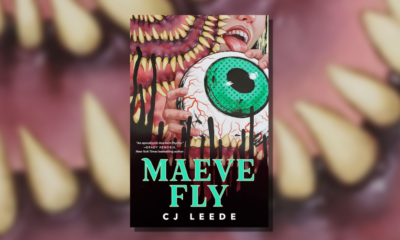



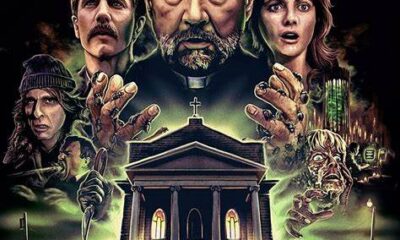

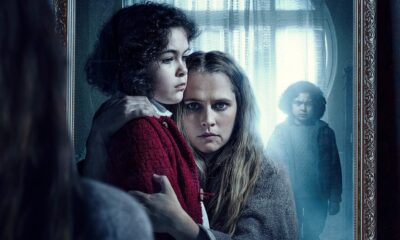



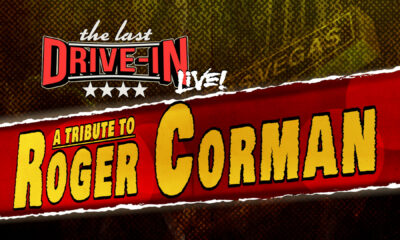



Holly
February 8, 2019 at 10:35 pm
These guys put on a rad show every time, and it’s cool to see who their influences are.